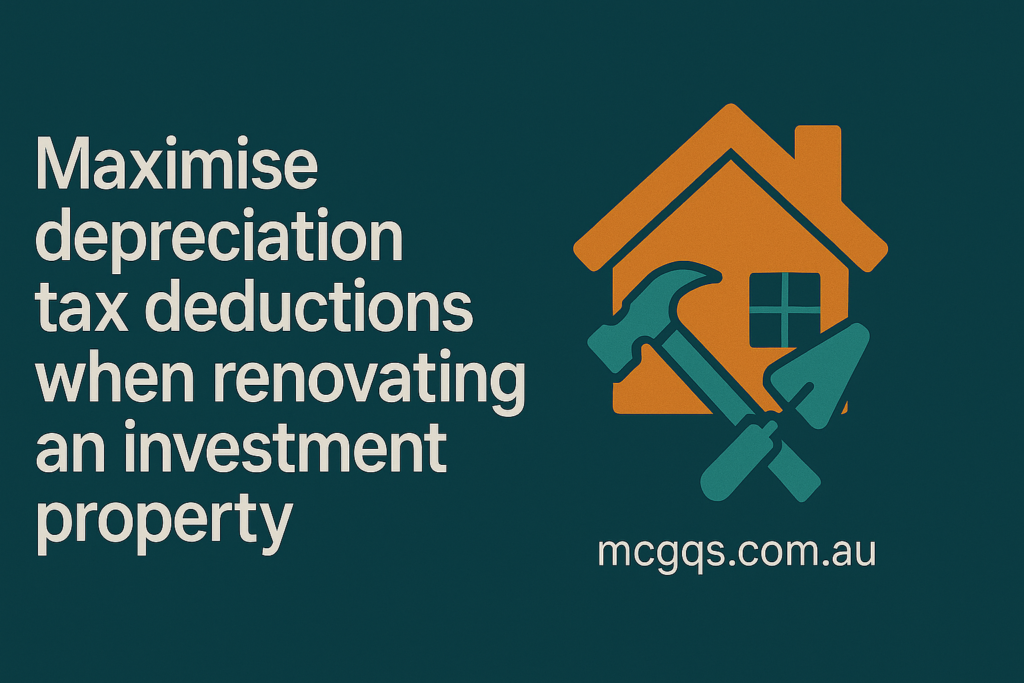Maximise depreciation tax deductions when renovating an investment property

Are you planning to renovate your investment property?
A brand new kitchen, new carpets or a quick lick of paint – there are plenty of ways a well-considered renovation can boost the capital value of your property and attract higher rental income.
A renovation can also provide a tax-time bonus if you plan ahead and engage a registered Quantity Surveyor to help you to maximise depreciation deductions before you start, and post-renovation.
Follow this simple two-step process:
Step 1: See a Quantity Surveyor before you start
Have a Quantity Surveyor inspect, assess and record the value of items you’re planning to throw out as part of the renovation. Things like old window furnishes, certain floor coverings and other plant and equipment items should have a residual value that can be written off and claimed as a tax deduction. These “scrapping costs” can add up quickly, especially if your property isn’t very old, and can technically earn you money for nothing.
Step 2: Update your tax depreciation schedule post-renovation
When renovations are complete, you’ll want to ensure that you’re claiming depreciation for anything new and improved. Have your Quantity Surveyor re-inspect your newly-renovated investment property and complete an updated tax depreciation schedule. Your accountant can then use this document to claim maximum deductions at tax time.
Why is a tax depreciation schedule so important?
A detailed tax depreciation schedule is a low-cost investment that can literally save you thousands of dollars for every year that you hold an investment property.
Completed by a Quantity Surveyor, it is a summary of structural components (such as bricks and concrete) and “plant and equipment” elements (floor coverings, air conditioning, bathroom accessories etc.) that you can claim depreciation for at tax time. It outlines exactly how much depreciation you can claim on your tax return each year, for up to forty years.
Because claiming depreciation can considerably lower your annual tax bill, a tax depreciation schedule can mean the difference between a negatively-geared and positively-geared investment property.
To comply with ATO rules, an investment property tax depreciation schedule must be prepared by a qualified, registered Quantity Surveyor.
